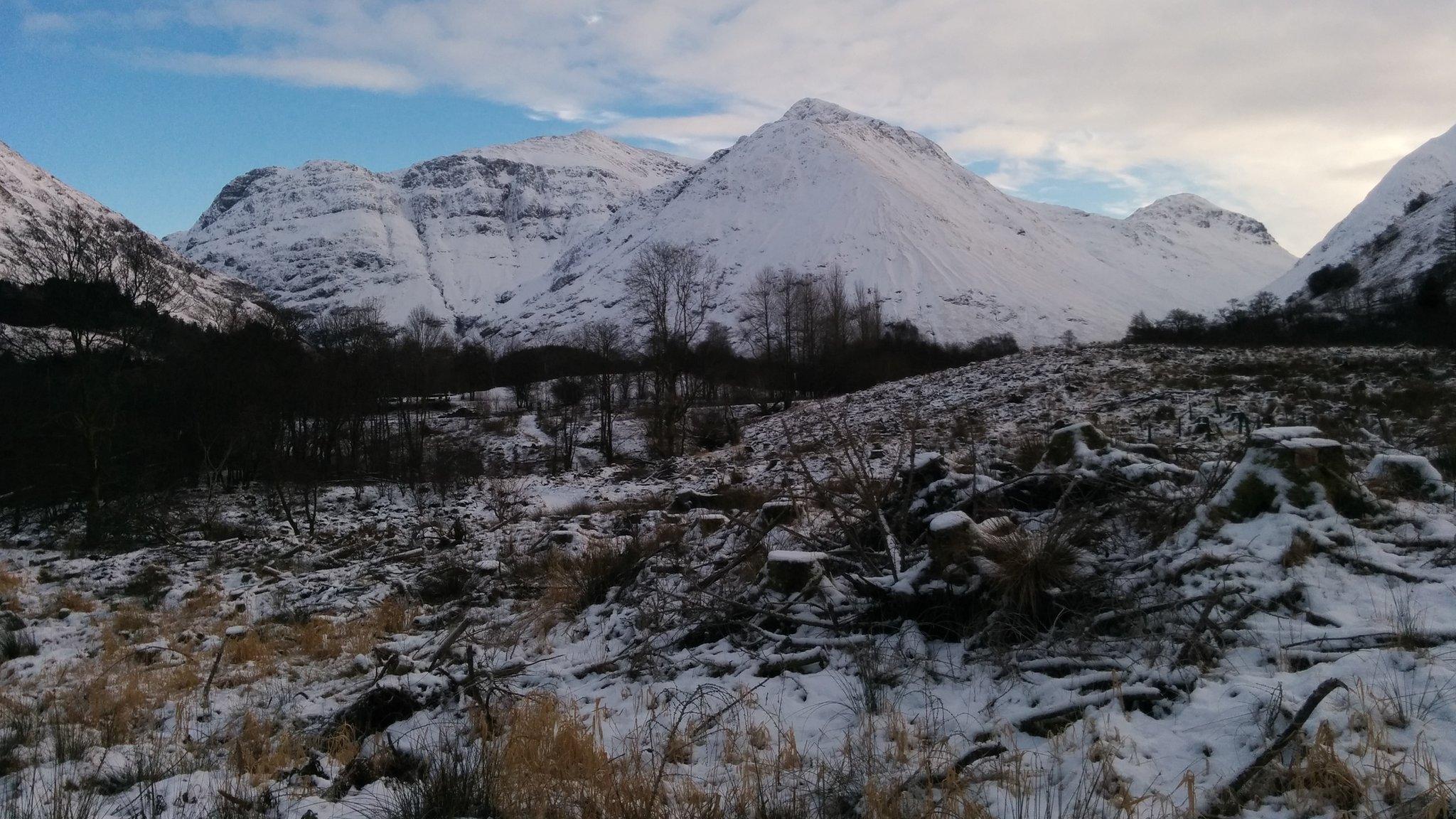Coin hoard could be linked to 1692's Glencoe Massacre
- Published

The coin hoard was found at a site associated with the MacDonalds of Glencoe
Coins found under a fireplace may have been hidden there by a victim of the infamous Massacre of Glencoe, according to archaeologists.
Almost 40 members of Clan MacDonald of Glencoe were killed in February 1692 after soldiers were ordered to attack them.
A student discovered the money at the site of a house linked to the clan's chief.
Lucy Ankers was on her first dig when she made the find.
The 36 coins were inside a pot which had a small round pebble as a lid and had been placed beneath a hearth stone slab in the fireplace.
The discovery was made in August during an excavation at the site of the ruined house, led by archaeologists from the University of Glasgow.
The property was associated with clan chief Alasdair Ruadh "MacIain" MacDonald of Glencoe.
He was among the estimated 38 people killed in the massacre.
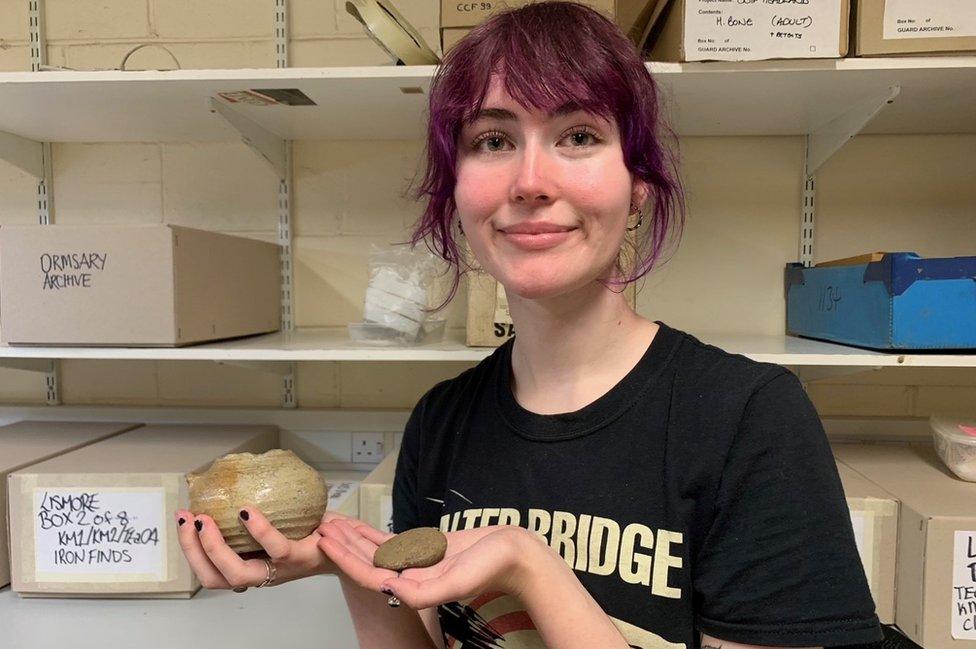
Lucy Ankers found the coins inside a pot with a pebble lid
Ms Ankers said: "As a first experience of a dig, Glencoe was amazing.
"The two weeks I spent digging solidified that I want to pursue a career within archaeology."
She added: "I wasn't expecting such an exciting find as one of my firsts, and I don't think I will ever beat the feeling of seeing the coins peeking out of the dirt in the pot."
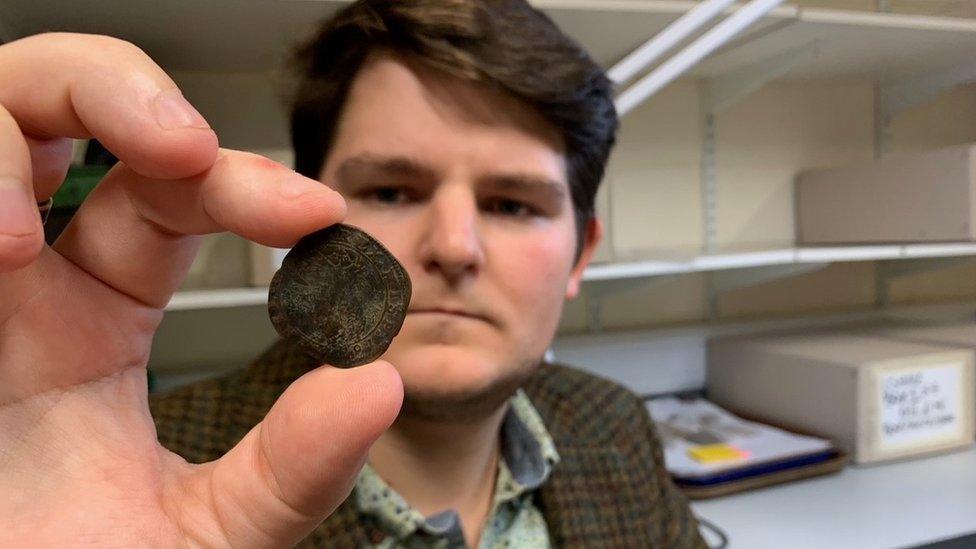
University of Glasgow excavations director Eddie Stewart with one of the coins
The MacDonalds were targeted because of their support for the exiled King James VII of Scotland and II of England.
The clan backed the restoration of the Stuart dynasty to the British throne and had taken part in the first Jacobite Rising of 1689.
Historians say they were late delivering an oath of allegiance to the Protestant King William III, and had been branded as rebels by the Secretary of Scotland, Sir John Dalrymple.

The coins have been identified by archaeologists from the University of Glasgow
In late January 1692, about 120 soldiers from the Earl of Argyll's Regiment of Foot arrived in Glencoe from Invergarry led by Capt Robert Campbell of Glen Lyon.
The troops were billeted with members of the clan, before turning on their hosts on 13 February.
Some people tried to escape in a snow blizzard to nearby glens, including Gleann Leac-na-muidhe, where the coin hoard was found.
The University of Glasgow has suggested a number of reasons why the money could be connected to the massacre.

The pot contained 36 coins
None of the coins were minted after the 1680s, which has led archaeologists to suggest they were most likely deposited under the fireplace either just before or during the killings for safekeeping.
The archaeologists also said whoever buried the coins did not return for them, possibly indicating they were among the victims of the massacre.
The coins are dated from the late 1500s through to the 1680s, and include pieces from the reigns of Elizabeth I, James VI and I, Charles I, the Cromwellian Commonwealth, and Charles II.
There were also coins from France and the Spanish Netherlands, as well as one coin which appears to have originated in the Papal States.
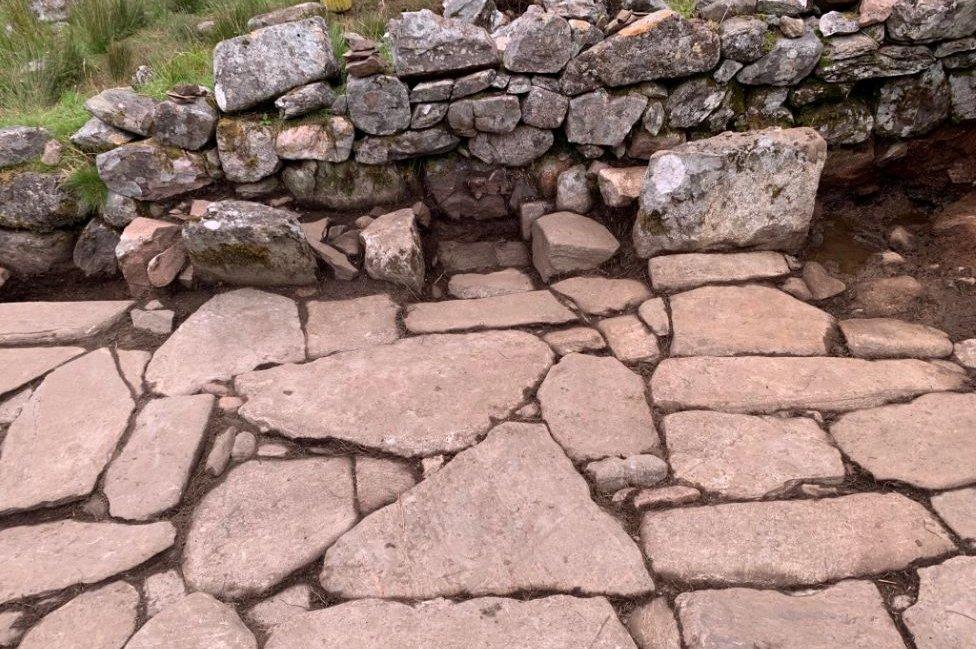
The fireplace where the coins were discovered
Dr Michael Given, a co-director of the archaeological project in Glencoe, said: "These exciting finds give us a rare glimpse of a single, dramatic event.
"Here's what seems an ordinary rural house, but it has a grand fireplace, impressive floor slabs, and exotic pottery imported from the Netherlands and Germany.
"And they've gathered up an amazing collection of coins in a little pot and buried them under the fireplace.
"It's a real privilege, as archaeologists, to hold in our hands these objects that were so much part of people's lives in the past."
University of Glasgow excavations director Edward Stewart added: "The excavation of MacIain's Summerhouse allows us to better understand the importance of these uplands to local elites.
"The scale of this structure and the wealth of artefacts uncovered within suggest this was a place where the MacDonald chiefs could entertain with feasting, gambling, hunting and libations.
"The discovery of this coin hoard within the structure adds an exciting dimension to this story.
"However, ordinary and everyday finds within this structure such as spindle whorls for making thread, a pitch fork and a dress pin, speak to the everyday lives of those who lived here, worked the land and minded the cattle."
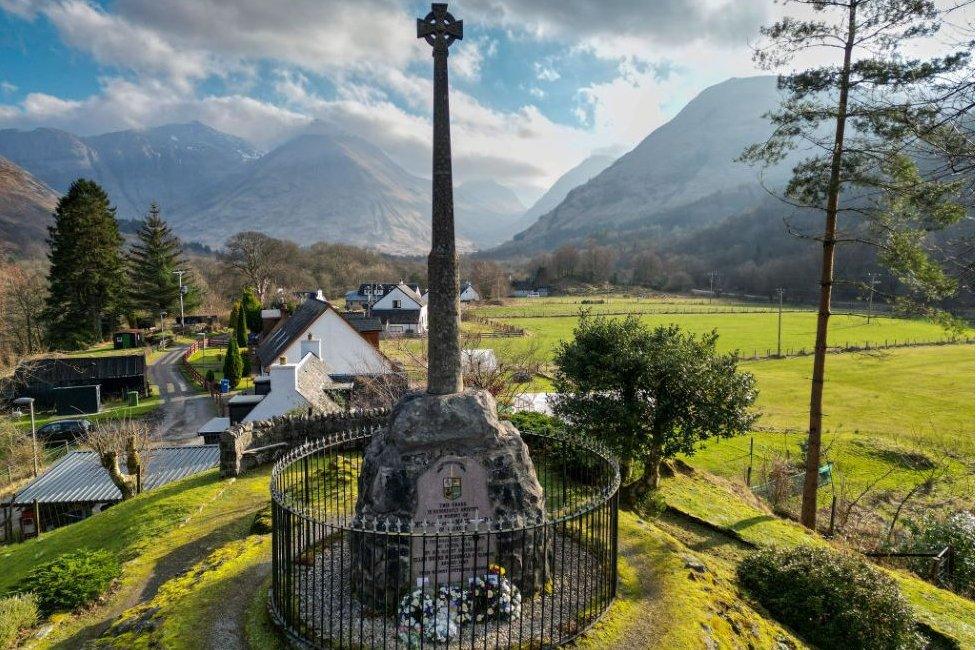
A memorial to the massacre in Glencoe

Do you have an idea for a story we could cover? Email our local reporters: inverness.news@bbc.co.uk, external
Related topics
- Published11 May 2019
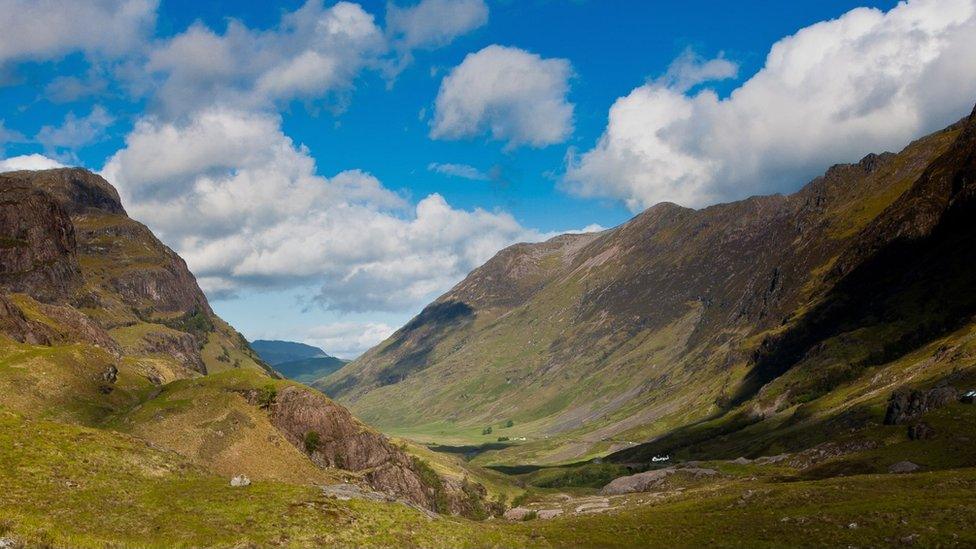
- Published12 February 2016
